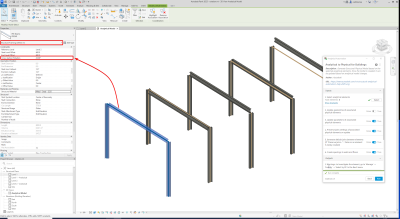Revit to SCIA: rotations and eccentricities
Rotations and eccentricities can be taken into account when making an export from Revit to SCIA Engineer as well as from SCIA Engineer to Revit. Nevertheless, some limitations are found, those limitations are discussed in this FAQ.
Revit to SCIA Engineer
Structural columns
In this example Revit model, four columns are created. All structural columns have an analytical element as well. The first column is not rotated, the second is rotated 45°, the third 90° and the fourth is rotated 135°.
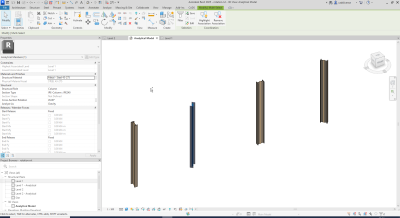
After an export to SCIA Engineer, this rotation is taken into account correctly. The value for the LCS rotation in SCIA Engineer is not exactly the same value. This is necessary to make sure the exact orientation of the cross-section is the same as the family in Revit. For the first column a rotation of -90° is found, for the second column -135°, the third -180° and for the fourth a rotation of -225° is found.

It is still advised to check the orientation of the cross-section whenever an asymmetric section is used.
Also keep in mind that whenever the analytical model is exported, that this rotation is defined based on the properties of the analytical element and not based on the structural element. If the structural columns is rotated 45°, but the analytical model has no rotation defined, than the SCIA model will have no rotation defined as well.
Structural beams
In this example Revit model, four structural beams are found. Structural beams can be rotated as well but have more options regarding eccentricity available. These properties will be supported and can thus be exported to SCIA Engineer. The first beam is located in the origin and has no rotation. For the second beam the z-justification is modified to 'top' and the rotation is set to 45°. For the third beam the z-justification is modified to 'bottom' and the rotation is set to 90°. For the fourth beam, no rotation is added but both the y and z offset are defined with a user value of 300mm and -300mm.
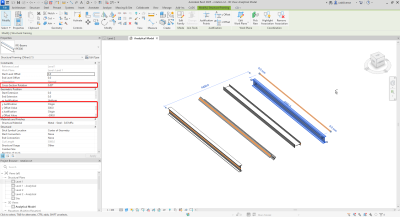
In SCIA Engineer you find that both these rotations and eccentricities are taken into account. The z- and y-justification will have an influence on the member system line properties (top, bottom, left right ...). The z- and y-offset will have an influence on the eccentricity properties ez and ey. The rotations of the beams are also taken into account during the export to SCIA Engineer.
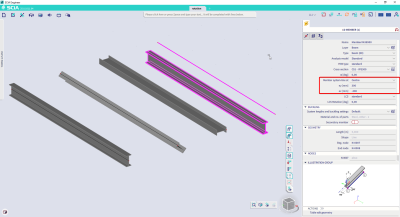
Also keep in mind that whenever the analytical model is exported, that a set rotation is defined based on the properties of the analytical element and not based on the rotation of the structural element. If the structural columns is rotated 45°, but the analytical model has no rotation defined, than the SCIA model will have no rotation defined as well.
SCIA Engineer to Revit
In this example SCIA Engineer project, some beams and columns are created. Both the rotation and eccentricities are modified for both type of elements. In the first model, only the rotation is edited to 45°. In the second model the system line is modified to 'Top', the rotation and eccentricity ey or ez are not modified. In the third model, the system line is modified to bottom. In the fourth model, the system line is modified to 'left'. In the fifth model, the system line is not modified but the values ey an ez are changed to 200 mm and 400 mm.

When this example is imported into Revit, a few warnings are shown.

- Both the alignment of the system line and the eccentricity values ey and ez are not supported for structural columns in Revit. Therefor they cannot be imported from SCIA Engineer. The element will be imported without the eccentricity values or alignment.
- Both the alignment of the system line and the eccentricity values ey and ez are supported for structural beams in Revit. The location of the system line is defined based on the justification value for y and z. The eccentricity ey and ez is defined based on the z or y offset values. Therefor, these properties will be imported from SCIA Engineer to Revit.
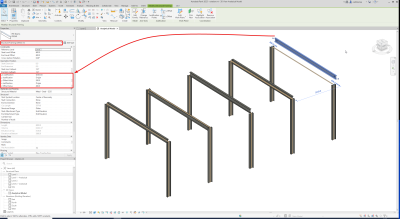
The orientation of both the first columns and beams does not seem to be correct at first glance. They should be rotated, but when checking the structural element this rotation does not seem to be taken into account. Nevertheless, this rotation is taken into account in the analytical model.

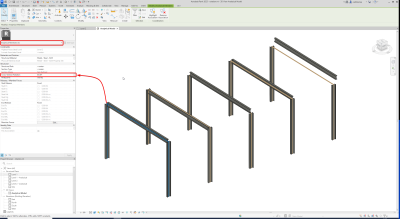
Currently this is a small limitation of the Revit plugin which occurs during the import. Only the rotation of the analytical model in Revit is defined when importing a SCIA model. Nevertheless, there is a workaround in Revit which can be applied. To generate the structural model with these correct rotations, the 'analytical automation' tool can be used.
- After the SCIA model is imported, open the analyze tab on top and select 'analytical automation'
- Select 'analytical to physical for buildings' to regenerate the existing structural model
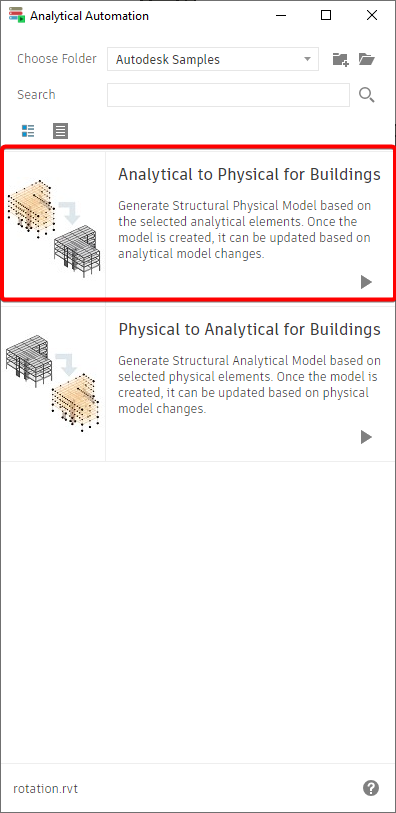
- Make a selection of the entities you want to modify. You can either make a small selection or select the full model at once
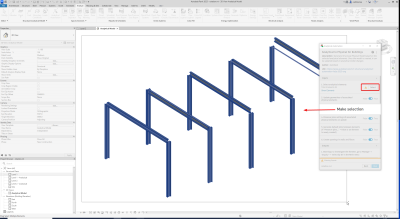
- Change the properties when necessary. If some eccentricities (ey, ez or the system line alignment) were defined for the beams, make sure to deactivate 'update geometries of assigned physical entities'. This will make sure the eccentricity properties are not lost during the regeneration. To rotate structural columns, this property needs to be activated.
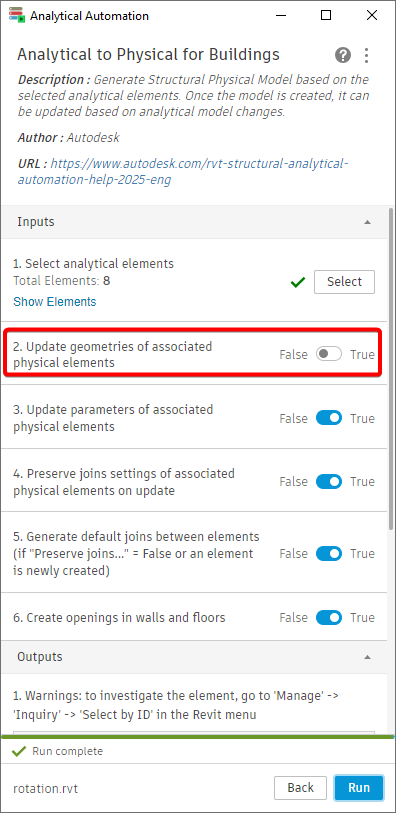
- Run the automation, the rotation of the structural element will be modified accordingly.
